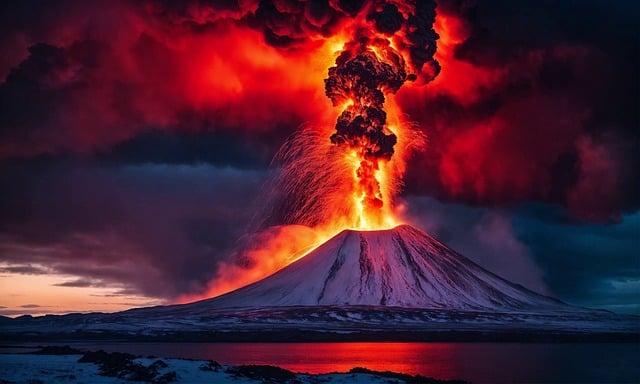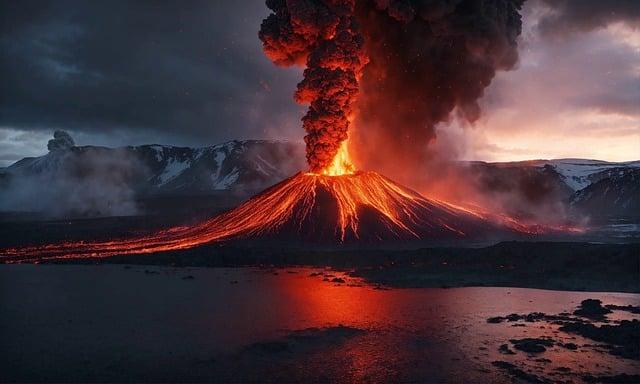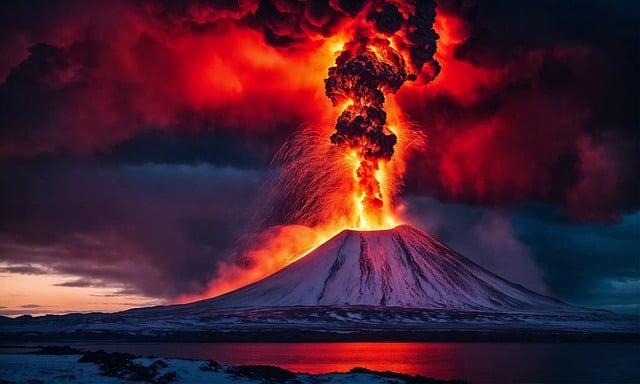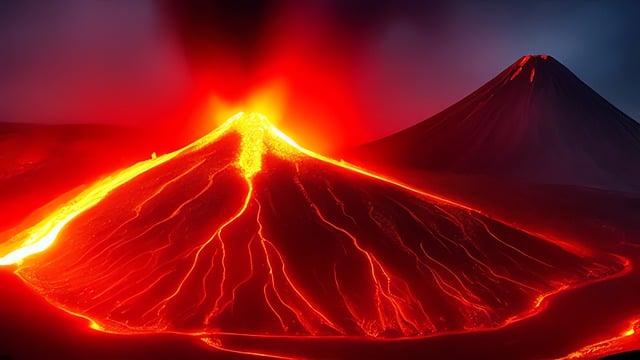- Introduction
- Mount St. Helens Awakens
- Impact of the Eruption
- Recovery and Renewal
- Signs of Potential Danger
- Conclusion
- FAQs
Introduction
The eruption of Mount St. Helens in 1980 remains one of the most significant volcanic events in modern U.S. history. The mountain's awakening not only reshaped the landscape but also served as a powerful reminder of the raw, natural forces at work beneath the Earth's surface. In this article, we explore the awe-inspiring eruption of Mount St. Helens and its lasting impact on the environment and communities in the region.
Mount St. Helens Awakens
In the early morning hours of May 18, 1980, Mount St. Helens, a dormant stratovolcano located in Washington State, violently erupted after a period of increasing seismic activity. The eruption unleashed a massive lateral blast that devastated everything in its path, flattening forests and sending plumes of ash skyward. The eruption dramatically altered the shape of the mountain, causing a massive crater to form on its northern flank.

(Image: Pixabay/@JuliusH)
The sheer power and ferocity of the eruption were a stark reminder of nature's unpredictability and the potential danger posed by living near active volcanic areas. The devastation caused by Mount St. Helens' awakening serves as a cautionary tale for those residing in volcanic regions around the world.
Despite the widespread destruction, the eruption of Mount St. Helens also provided scientists with valuable insights into volcanic processes and helped improve our understanding of volcanic behavior, monitoring, and mitigation strategies.
Impact of the Eruption
The eruption of Mount St. Helens had far-reaching consequences beyond the immediate vicinity of the volcano. The massive release of ash and gas into the atmosphere disrupted air travel and had significant impacts on regional ecosystems and wildlife.

(Image: Pixabay/@AlexAntropov86)
The ash cloud spread across the United States and even circled the globe, leading to spectacular sunsets as far away as Europe. The deposition of ash and debris also had a profound effect on local rivers and lakes, altering water quality and aquatic habitats.
Communities near Mount St. Helens faced challenging recovery efforts as they grappled with the loss of homes, infrastructure, and livelihoods. The eruption left a lasting scar on the landscape, serving as a somber reminder of the awesome power of nature.
Recovery and Renewal
In the decades following the eruption, efforts to restore and monitor the ecosystem around Mount St. Helens have been ongoing. Despite the harsh conditions, life has gradually returned to the barren landscapes left in the wake of the eruption.

(Image: Pixabay/@JuliusH)
Scientists have observed the resilience of nature as plant and animal species have recolonized the area, adapting to the harsh environment created by the volcanic activity. The process of renewal serves as a testament to the incredible ability of life to persist and thrive in even the most challenging of circumstances.
Visitors to Mount St. Helens today can witness firsthand the dynamic interactions between geological forces and ecological systems, providing a unique opportunity to study the ongoing processes of recovery and regeneration in a volcanic landscape.
Signs of Potential Danger
While Mount St. Helens remains in a period of relative calm since its last major eruption, scientists continue to monitor the volcano closely for any signs of renewed activity. The volcano's history of explosive eruptions underscores the importance of vigilant monitoring and preparedness in volcanic regions.

(Image: Pixabay/@JuliusH)
From ground-based sensors to satellite observations, modern technology allows researchers to track changes in volcanic activity and provide early warnings to at-risk populations. Public awareness and education about volcanic hazards play a crucial role in ensuring the safety and resilience of communities living near active volcanoes.
Conclusion
The awakening of Mount St. Helens in ash and flame serves as a poignant reminder of the dynamic and often unpredictable nature of volcanic activity. The catastrophic eruption of 1980 reshaped the landscape, leaving a lasting impact on the environment and local communities.
As we reflect on the events of that fateful day, we are reminded of the importance of understanding and respecting the power of nature. The story of Mount St. Helens is a testament to the resilience of life and the ongoing cycle of destruction and renewal that characterizes volcanic landscapes.
FAQs
What caused the eruption of Mount St. Helens?
The eruption of Mount St. Helens was triggered by a buildup of magma beneath the volcano's surface, leading to increasing pressure and eventual explosive release.
Is Mount St. Helens still considered an active volcano?
Yes, Mount St. Helens is classified as an active volcano, and while it remains relatively quiet in recent years, scientists continue to monitor it for any signs of renewed activity.

